Hot in the city: Rising night temperatures a potentially major health issue in Asian metropolises
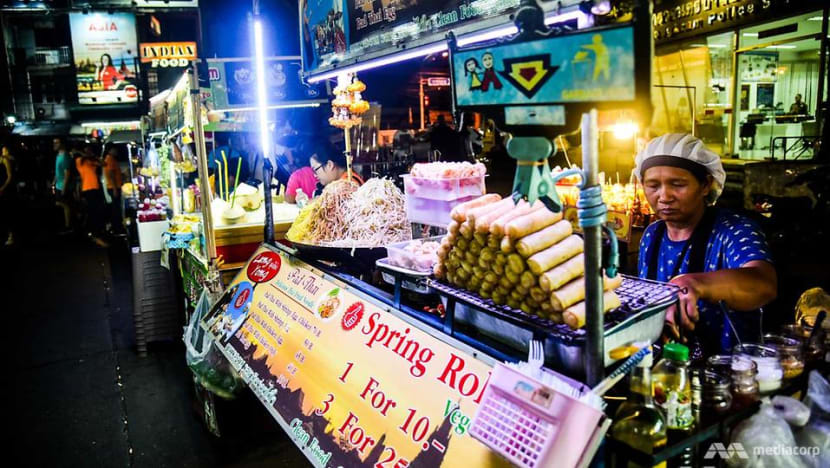
Rising night temperatures can pose great health risks in big cities. (Photo: Jack Board)
BANGKOK: Prasert Saisamphan’s home used to be a breezy space, surrounded by trees. Now, the 65-year-old finds it hard to breathe, surrounded by confining concrete and the dust of a growing city.
“When I was about 20 years old, condominiums were not built here yet. The weather was nice and cool. We only used a fan in the evening. No one had an air-conditioner in my house,” he said.
“Now, there’s less air. It feels like I can’t take a deep breath.”
The view from Prasert’s house in Klong Khlang in central Bangkok is dominated by the towering pylons of an expressway, and in the distance, seemingly ever-growing residential towers.
“It’s hot this year. It’s so hot that the electricity charges significantly rise. It’s so hot that I installed water sprinklers on the roof. It’s so hot that I need water spray. It feels doubly hot compared to last year,” said Jurairat Kruephimai, another local resident.
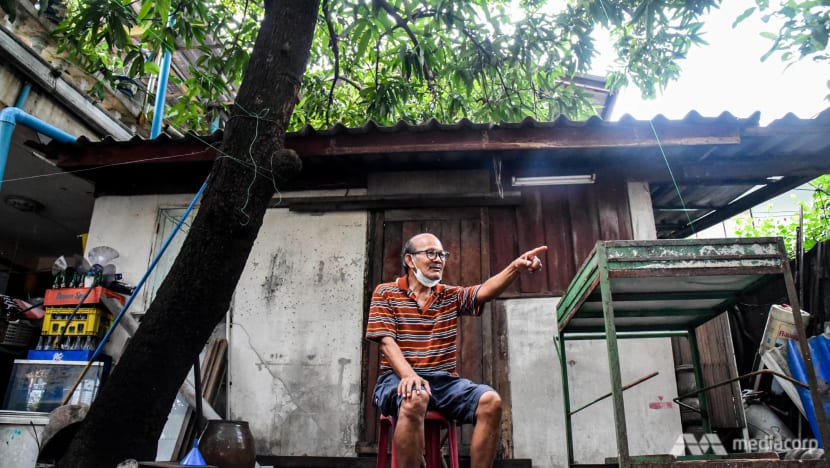
The heat they feel is not imagined. The effect of a phenomenon known as the urban heat island (UHI) is in force in Bangkok, causing the maximum temperatures to rise higher than the surrounding areas. It is particularly felt at night.
Roads, buildings and other concrete urban infrastructure absorb solar radiation during the day and release it slowly at night, causing an increase in temperature. Vehicles add to the issue as well as the clearing of green spaces to make way for new construction.
Dr Sigit Dwiananto Arifwidodo from Kasetsart University has extensively studied UHI in the Thai capital. In 2012, one of his studies found that the maximum temperature difference between urban and rural areas was 7 degrees Celsius. And up to 2018, he noted that temperatures amplified by UHI continued to increase year on year.
“Higher temperatures because of the urban heat island effect are rising every year. At first, we were surprised,” Dr Arifwidodo told CNA.
“When we map it out, the area that is a hotspot is getting bigger and bigger. The latest one where we used the data from 2018, it’s almost the whole of Bangkok.”
READ: ‘We have upset the balance of nature’, Thai environment minister warns amid green recovery efforts from pandemic

HIGH URBAN DENSITY
Bangkok is not alone in having to contend with the UHI problem - it is increasing in regularity and magnitude across Asian cities, as urban areas expand, green areas decrease and poor air ventilation stifles dense spaces.
While hot temperatures in the day pose risks for workers exposed to prolonged periods outdoors, research shows that it is at night when more damage can be done, in the form of heat stroke or exhaustion.
A recent study by the Chinese University of Hong Kong (CUHK) highlights the dangers of consecutive nights of increased temperatures as a result of climate change and the urban heat island effect.
In July, Hong Kong experienced a heatwave that brought a “very hot warning” for 20 consecutive days. The hot nighttime temperatures - especially when compounded by hot days - were found to significantly intensify health impacts.
“Nighttime is supposed to provide the body with a chance to recover and rest from the heat of the day, but ‘hot nights’ make the recovery and resting less effective,” said Dr Kevin Lau, a research assistant professor from the Institute of Future Cities at CUHK.
“Due to the congested living environment with poor air ventilation, the occupants in subdivided flats are particularly vulnerable and not able to recover from the heat of the day,” he said.
The impacts most particularly affect women, the elderly and very young. As city populations grow older and living areas become more crowded, the risks of heat stress are expected to worsen.
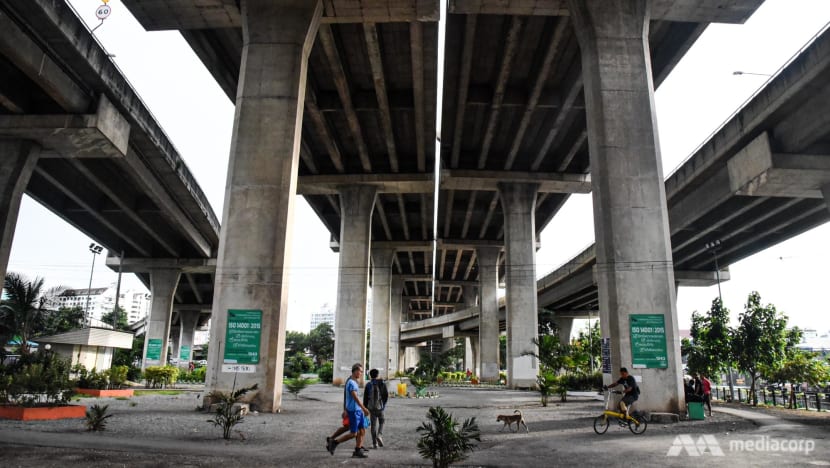
“Urban density needs us to build upwards and cram more people into a finite space. When you do that, you get the issues of warmer temperatures at night, primarily from the urban heat island,” said Winston Chow, an associate professor of Science, Technology and Society at the Singapore Management University.
“If you have a greater proportion of older people living in the cities exposed to warmer conditions in the day and night, you will have health problems.”
Some of the solutions the Hong Kong researchers offer for their city include better urban planning and building design, taking into account increased ratios for green spaces, natural airflow and the shifting challenges of climate change.
Assoc Prof Chow said those strategies can be applied to Singapore, which has also recorded UHI temperature rises of 7 degrees Celsius, despite different weather conditions and urban layout. Hotspots have been detected in areas including Punggol, Sengkang, Seletar and Woodlands.
Adapting existing infrastructure, like retrofitting apartment buildings or adding rooftop gardens, are only able to provide micro improvements to local temperatures. “The issue is for new buildings, that’s where a lot of the new climate-conscious design ideas can be applied,” he said.
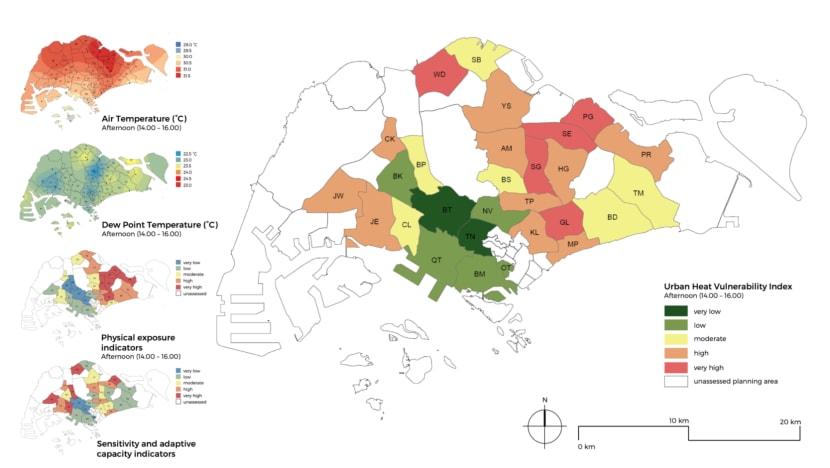
“If there are buildings with concrete and without green space, there isn’t much we can do. But each building has its own age - after five or 10 years it will need renovation, and the new regulations may include adding greenery to the building,” he told CNA.
The dense industrialised provinces around Bangkok are already recording UHI effects, as bad if not worse than the city proper, but there are still mitigation options if governments coordinate their efforts, according to Dr Arifwidodo.
Similarly, Assoc Prof Chow emphasised that throughout Southeast Asia, it is the secondary cities away from the capitals where consideration and forward thinking needs to be applied now, to avoid the same problems.
“The fastest growing cities are the secondary cities, like Chiang Mai, Surabaya, Danang. Those are places where you will get the heat island and overheating problem if we follow the same mistakes that we have done in urban development in the past,” he said.
“The new cities in terms of development, they have to be built by people working outdoors in hotter environments. They will have way more exposure to heat stress, not just during the daytime but at night when they go back to their migrant worker dorms or their cramped spaces, without the benefit of a cool space to recover.”

READ: New research links Asia's air pollution with heavy economic impacts, thousands of premature deaths
"IT’S GOING TO BE HOT"
In Bangkok, Dr Arifwidodo says the problem goes under the radar due to a lack of mortalities or morbidities directly caused by heat stress, especially compared to other parts of the country.
“At a city level, there has been very limited attention, especially from the provincial government because they think, from a health perspective, the number of people who die from heat stroke is relatively low,” he said.
“There are some heat-related illnesses in Bangkok, but this happens mostly for people with low socio-economic status, like construction officers, motorcycle drivers and other jobs that require whole days staying outside.”
The experts are in agreement that UHI - and climate change generally - will only serve to increase the levels of inequality across the region. Air conditioning at present shields millions of residents from dangerous nighttime heat, but for those who cannot afford it, the future will be more difficult to deal with.
“It’s going to be hot. Imagine nighttime temperatures go up from 25 degrees Celsius to 27 degrees Celsius at night, imagine how much you will need to rely on air conditioning. Think of all those in low income countries, it’s going to be much worse for them,” Assoc Prof Chow said.
Air conditioning presents its own detrimental environmental footprint, especially when the energy required to power it is generated by dirty power sources. Far from solving the urban heat issue, it only shifts, from indoors to outdoors.
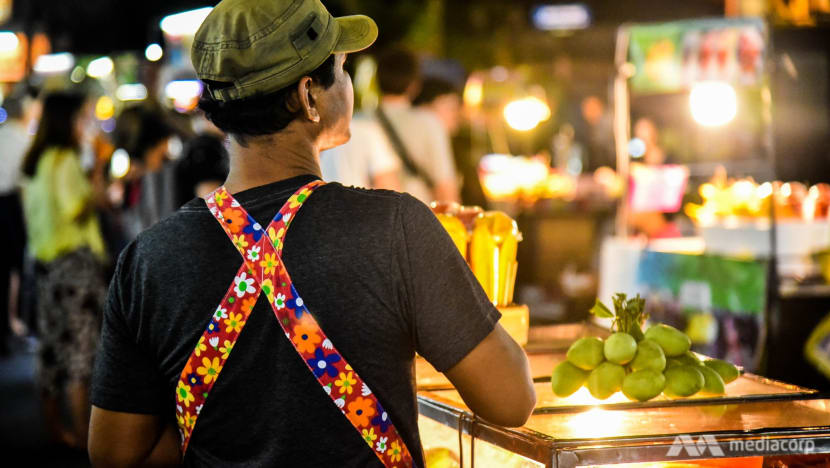
“Air conditioning is like you’re getting fatter but instead of going on a diet, you buy larger pants,” Dr Arifwidodo said.
“When we use air conditioners, we create heat outside and contribute to increasing temperatures in micro-climates in surrounding areas. Increased use will result in higher energy consumption and increase inequalities between communities,” he said.
For many of the residents of Klong Khlang, and other poorer communities, air conditioning is an unimaginable luxury.
Trees, herbs, and vegetables line the walkways and adorn the rooftops of their modest houses, small attempts to cool their surroundings, especially during the summer months of March through May.
“Even though I have trees surrounding my house, it’s not that helpful. The concrete absorbs heat. People rely on fans,” Ms Jurairat said.
“But this year, it’s hot. Even the fan is not helpful. I can’t stand it.”
Additional reporting by Thanit Nilayodhin.














